29 Unique Animals That Start with ‘Ch’ You Should Know

Animals that start with “Ch” can be found in many different groups, like mammals, birds, reptiles, and marine life.
Each animal has special features that help them survive in their habitats.
Some are built for life on land, while others are made to live in the water.
These animals show how diverse life on Earth can be.
Each one plays an important role in nature, from fast cheetahs to colorful chameleons.
They help keep the environment balanced by controlling other animals or spreading seeds.
The wide variety of animals that start with “Ch” shows us how amazing and different the world of animals really is.
Mammals That Start With Ch
1. Cheetah
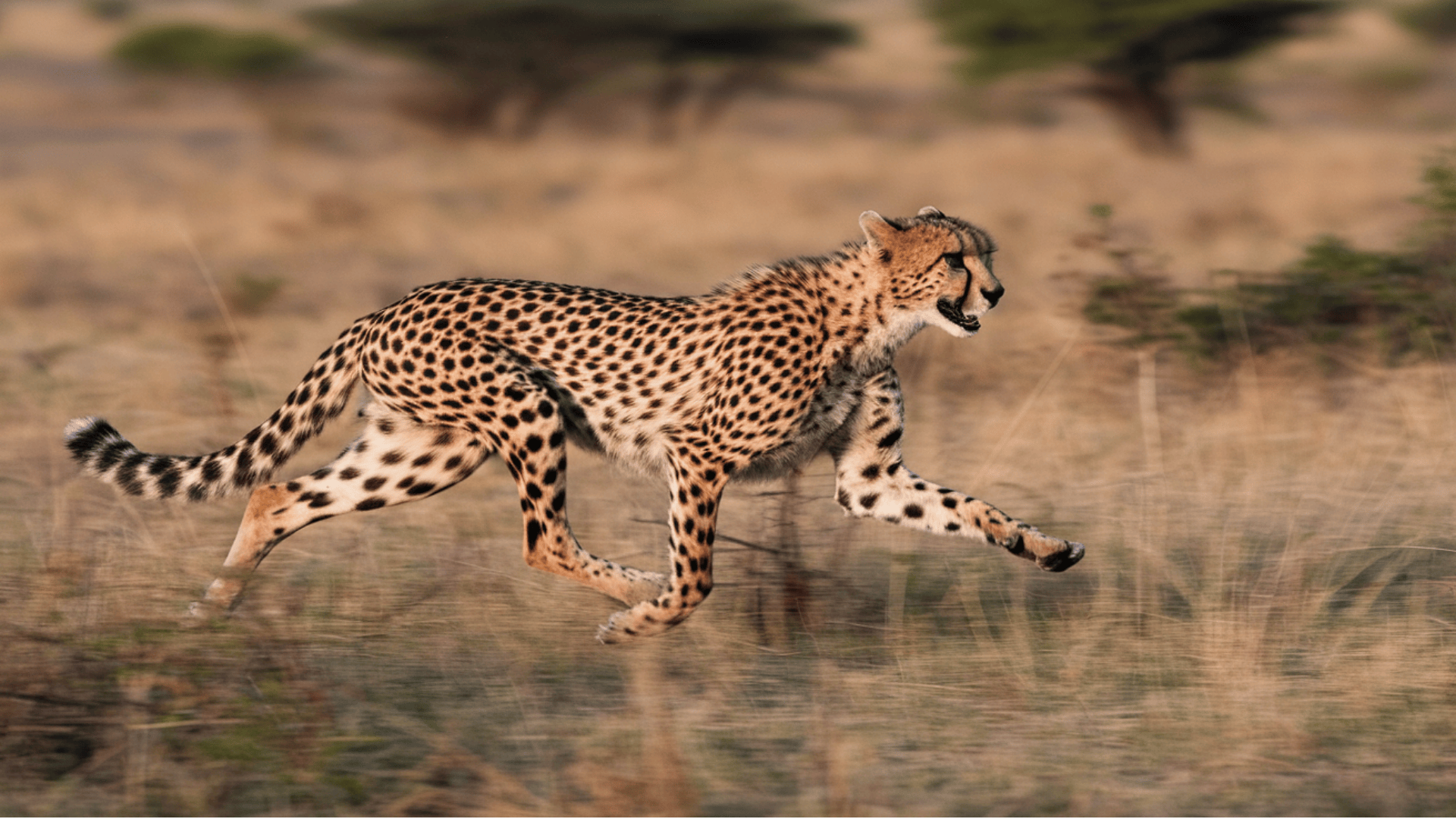
The cheetah is a large, fast cat that lives in the grasslands and open areas of Africa.
It is known for its slim body, black spots, and long legs.
Cheetahs hunt alone or in small groups, mostly eating animals like gazelles.
They are famous for their speed and ability to run very fast when chasing prey.
Unfortunately, cheetahs are endangered because their homes are being destroyed, they are hunted, and they sometimes compete with humans for food.
2. Chimpanzee

The chimpanzee is a smart, strong primate that lives in forests and woodlands of Africa.
They have dark brown or black fur and are very similar to humans in how they behave and communicate.
Chimpanzees live in groups called communities and spend most of their time in trees.
They eat fruits, leaves, and sometimes insects or small animals.
Chimpanzees are endangered because of habitat loss, hunting, and diseases, which threaten their population.
3. Chinchilla

The chinchilla is a small, fluffy rodent native to the Andes Mountains in South America.
It has soft, dense fur that is much thicker than most other animals, which helps it stay warm in its cold mountain home.
Chinchillas are nocturnal, meaning they are active at night and enjoy running and jumping around.
They eat plants like hay, seeds, and fruits.
Chinchillas are endangered due to hunting for their fur and habitat destruction.
They are now mostly found in protected areas and are kept as pets in some places.
4. Chipmunk

The chipmunk is a small, striped rodent found in North America.
It has brown fur with dark stripes running down its back, which helps it blend into its surroundings.
Chipmunks are active during the day and spend much time collecting food, such as nuts, seeds, and berries.
They live in burrows underground, where they store food to eat during the colder months.
Chipmunks are common in forests, gardens, and parks.
While they are not endangered, they can be affected by habitat loss and human activity.
5. Chital

The chital, also known as the spotted deer, is a type of deer found in forests and grasslands across India and Sri Lanka.
It has a reddish-brown coat with white spots, which helps it blend into its natural surroundings.
Chitals are herbivores, feeding on grasses, leaves, and fruits.
They live in herds, usually led by a dominant male.
Chital deer are active during dawn and dusk, often seen grazing in groups.
They are not endangered, but habitat loss and hunting can threaten their populations.
6. Chevrotain (Also Called The “Mouse Deer”)
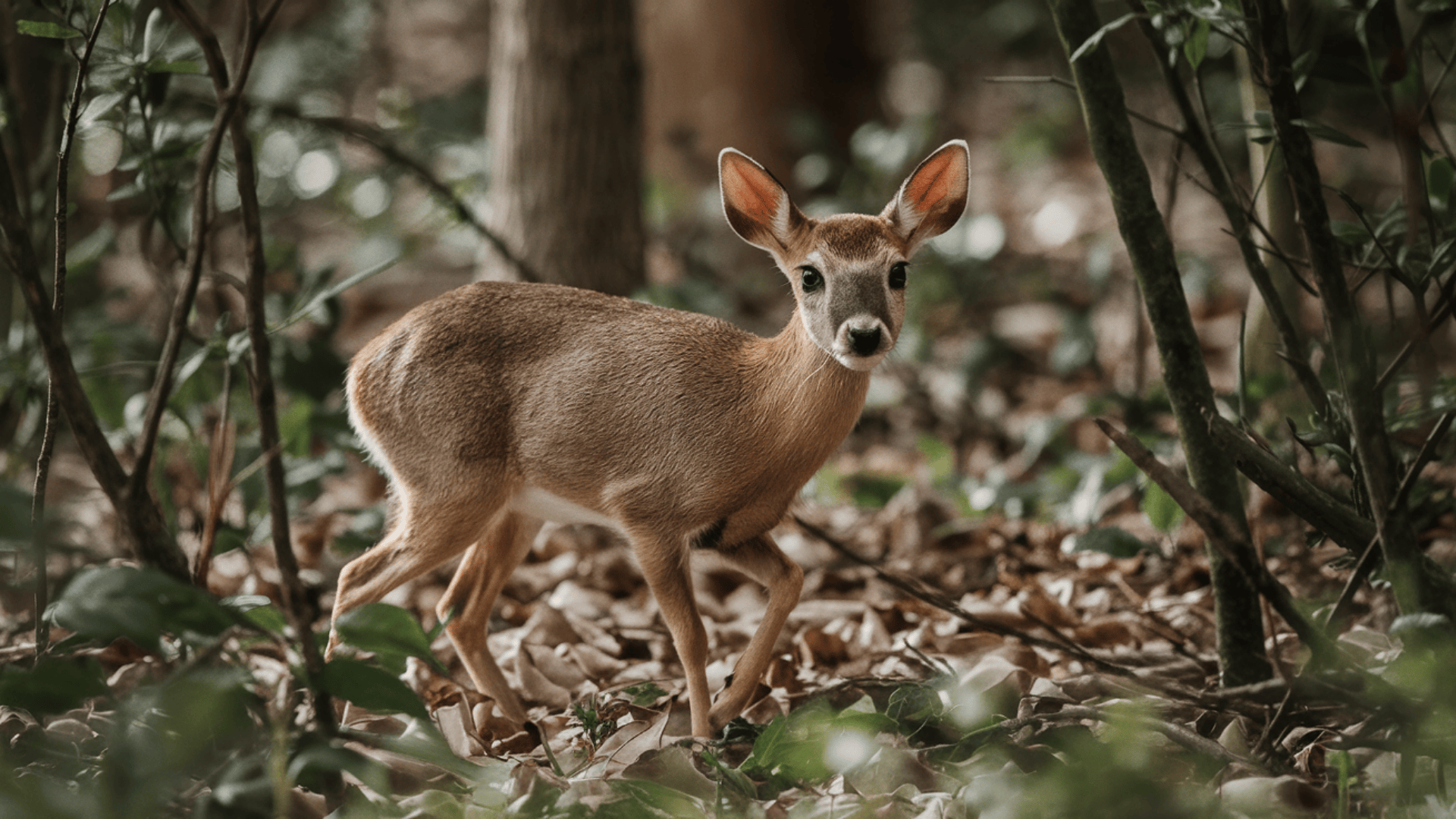
The chevrotain, also known as the “mouse deer,” is a small, deer-like mammal found in Southeast Asian forests.
Despite its name, it is not a type of deer but a member of the Tragulidae family.
Chevrotains have a slender body, short legs, and a mouse-like appearance.
They are usually brown or gray with white markings, which help them blend into their forest homes.
These animals are herbivores, feeding on leaves, fruits, and seeds.
Chevrotains are solitary and shy, usually hiding in dense vegetation during the day.
They are not considered endangered, but their habitat is being threatened by deforestation.
7. Chinchilla Rat

The Chinchilla Rat is a small rodent found in South America, mainly in the Andes Mountains.
Its soft, dense fur, similar to that of a Chinchilla, helps it survive the cold climate.
These rats are nocturnal and live in rocky, high-altitude areas, making burrows for shelter.
They primarily feed on plants, seeds, and grasses.
While not widely endangered, their habitat is threatened by human activity, especially mining and development, which can disturb their environment.
8. Chacma Baboon
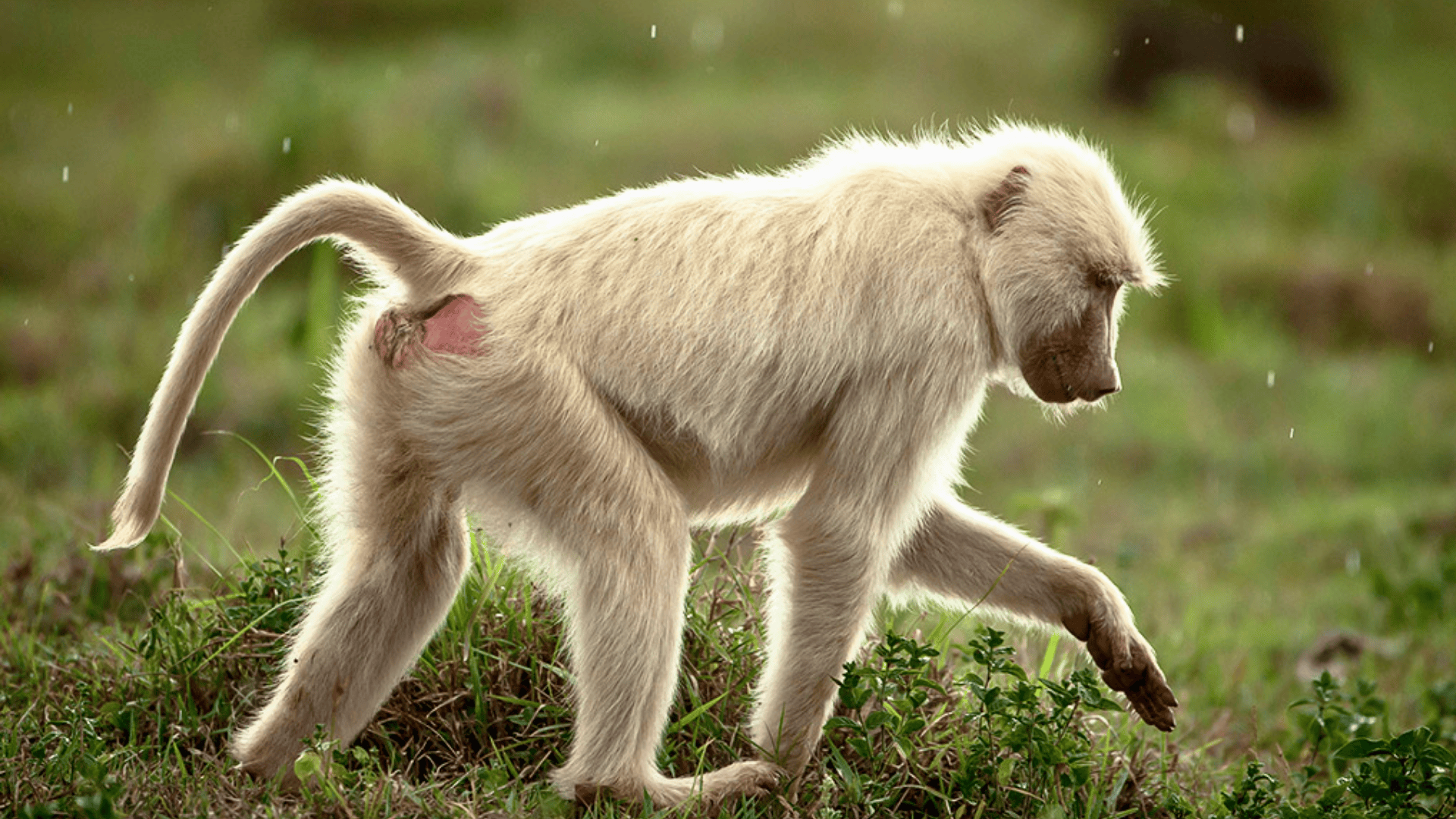
The Chacma Baboon is a large monkey found in southern Africa.
It has a long, pointed nose and brown or gray fur.
Chacma Baboons live in groups called troops, usually led by a dominant male.
They eat a variety of foods, including fruits, seeds, small animals, and insects.
These baboons are smart and use tools.
They live in different places, like grasslands, forests, and mountains.
While they are not endangered, they face dangers from losing their homes and conflicts with humans.
9. Chamois

The Chamois is a small animal that looks like a goat and an antelope.
It lives in the mountains of Europe and Asia.
It has a strong body, with a dark brown or gray coat and black markings on its face.
Chamois are great climbers, using their sharp hooves to climb steep cliffs and rocky areas.
They eat plants like grasses, shrubs, and leaves.
These animals live in groups called herds.
Chamois are used to cold, high places and can be found in mountain meadows and forests.
While they are not endangered, they are at risk from hunting and losing their homes.
10. Chiru

The Chiru is a medium-sized antelope living in the Tibetan Plateau’s high mountains in China and Nepal.
It has a light brown coat with white markings on its belly and legs.
Chirus are fast and agile, which helps them run away from predators in their tough environment.
They eat grasses and shrubs.
These animals live in groups called herds and move together across the plateau.
Chirus are endangered because of habitat loss and illegal hunting, especially for their soft wool used in making clothes.
Birds Starting With Ch
11. Chicken

The chicken is a domesticated bird found all over the world.
It is known for laying eggs and providing meat.
Chickens come in different colors and sizes, but most have feathers, a comb on their head, and wattles under their beak.
They are omnivores, eating grains, seeds, insects, and small plants.
Chickens live in groups called flocks and communicate with sounds like clucks and squawks.
They are raised for their eggs and meat and are important in farming.
Although not endangered, many chickens are raised in factory farms, which raises concerns about their well-being.
12. Chilean Flamingo

The Chilean flamingo is a large, pink bird found in South America, especially in Chile, Argentina, and Peru.
It has long, thin legs, a curved neck, and pink and white feathers.
Flamingos are known for their special way of feeding, using their beaks to filter small creatures like algae and brine shrimp from the water.
They live in big groups near salty lakes and wetlands.
While not endangered, their homes are at risk from pollution and human activity.
Flamingos play an important role in keeping their ecosystems balanced.
13. Chinese Bamboo Partridge

The Chinese bamboo partridge is a small bird that lives on the ground in forests and bamboo areas across China.
It has brown feathers and patterns that help it blend in with its surroundings.
These birds are shy and like to stay hidden in thick plants.
They mostly eat seeds, fruits, and insects.
Chinese bamboo partridges usually live alone or in small groups.
While they are not endangered now, they face habitat loss and hunting dangers.
They help control insect numbers and spread seeds in their environment.
14. Chickadee

The chickadee is a small, friendly bird found in forests across North America.
It has a black cap and bib, with a white face and a fluffy body.
Chickadees are curious and often come close to humans looking for food.
They eat seeds, insects, and berries and stay active all year.
These birds live in small groups, especially in winter, and use different calls to communicate.
Chickadees are good at adjusting to environmental changes, but habitat loss can threaten their numbers.
15. Chukar

The chukar is a tough, ground-dwelling bird found in rocky hillsides and grasslands in Europe, Asia, and North America.
It has a grayish-brown body, black stripes on its sides, and a red beak and legs.
Known for its “chukar” call, this bird prefers running over flying, but it can take off if needed.
It eats seeds, leaves, and insects.
While not endangered, the chukar faces threats from habitat loss and hunting in some areas, which can impact its numbers.
16. Chestnut-Headed Bee-Eater

The Chestnut-Headed Bee-Eater is a colorful bird found in Southeast Asia, particularly in India, Myanmar, and Thailand.
It has a chestnut-colored head, a green body, and black markings around its eyes.
Known for its skill in catching flying insects, especially bees, it hunts by snatching them mid-air.
The bird often perches on trees or power lines while waiting to hunt.
The Chestnut-Headed Bee-Eater’s habitat is at risk due to deforestation and human activity, which can affect its food sources and nesting areas.
Reptiles Starting With Ch
17. Chameleon

The Chameleon is a lizard known for its ability to change color.
Chameleons, native to Africa and parts of Asia, communicate by changing color, controlling body temperature, and blending in with their surroundings to avoid predators.
They have long, curled tails and special feet that help them climb trees and shrubs.
Chameleons mainly eat insects, using their long, sticky tongues to catch their prey.
Some species are endangered due to habitat loss and illegal pet trade.
Chameleons are also popular in culture because of their unique look and amazing color-changing ability.
18. Chinese Alligator

The Chinese Alligator is a small species of alligator found in eastern China.
Unlike the larger American alligator, it usually grows to about 5 feet long.
These alligators live in freshwater rivers and marshes, often in muddy, slow-moving waters.
They are mainly active at night, feeding on fish, amphibians, and small invertebrates.
Due to habitat loss and pollution, the Chinese alligator is critically endangered.
Efforts are being made to protect their remaining habitats and help their population grow.
These alligators play a key role in keeping their ecosystem balanced by controlling small animal populations.
19. Chinese Water Dragon

The Chinese Water Dragon is a large, green lizard native to southern China.
It usually grows to about 3 feet long, with a long tail and a spiny crest on its back.
These lizards are often found near water, like rivers and streams, where they can swim and climb trees.
They are omnivores, eating insects, fruits, and vegetables.
Known for their calm nature, Chinese Water Dragons can be kept as pets, but they need a humid environment to stay healthy.
While they are not endangered, they face threats from habitat destruction.
20. Chaco Tortoise

The Chaco Tortoise is a land turtle native to the Chaco region of South America, especially in Argentina, Paraguay, and Bolivia.
It has a dark, domed shell with yellowish-brown markings.
These tortoises are herbivores, feeding on grasses, shrubs, and cactus pads.
They are well-suited to the hot, dry climate of the region, often spending time in burrows to stay cool.
Chaco Tortoises are listed as vulnerable due to habitat loss and illegal trade.
Efforts are being made to protect their habitats and ensure their survival.
21. Chrysopelea (Flying Snake)

Chrysopelea, also known as the flying snake, is a species found in Southeast Asia.
It is famous for its ability to glide through the air by flattening its body, which helps it glide from tree to tree.
These snakes are non-venomous and mainly feed on small animals such as frogs, lizards, and birds.
They live in forested areas and are excellent climbers, often found in trees.
Despite their unique ability to glide, flying snakes are not aggressive and use gliding mostly to escape predators.
Fish starting with Ch
22. Char

The Char is a freshwater fish found in cold northern waters, such as those in Europe, Asia, and North America.
Related to trout and salmon, they are often found in clear, cold lakes and rivers.
Char have vibrant colors, with green or gray bodies and red or orange spots.
They are carnivores, feeding on smaller fish, insects, and invertebrates.
Char are popular with fishermen because they are challenging to catch and are valued for their firm, tasty flesh.
Some species of Char are endangered due to habitat loss and overfishing.
23. Cherry Trout
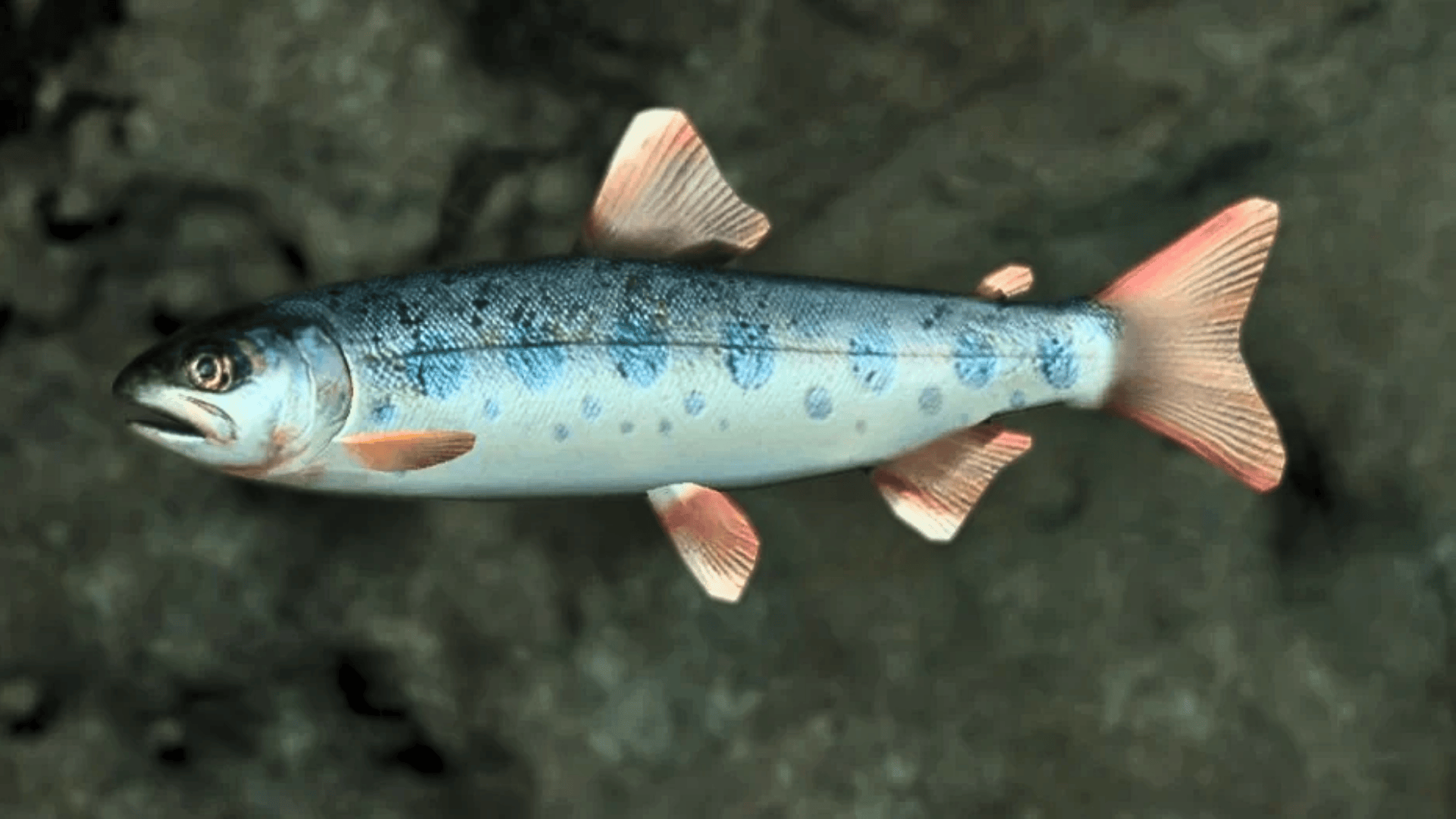
The Cherry Trout is a rare, brightly colored fish found in mountain streams, mainly in parts of Asia.
Its body has striking red and orange hues. Like trout and char, it belongs to the salmon family.
Cherry Trout live in clear, cold waters and are carnivores, eating smaller fish, insects, and aquatic invertebrates.
Fishermen prize these fish for their beauty and the challenge of catching them.
Due to their limited distribution and sensitive habitats, the Cherry Trout is vulnerable to habitat loss and pollution.
24. Channel Catfish

The Channel Catfish is a freshwater fish found in rivers and lakes across North America.
It has a smooth, silvery body, a slightly forked tail, and long whisker-like barbels around its mouth.
Channel Catfish are opportunistic feeders, eating fish, insects, and plant matter.
Known for their strong, muscular bodies, they can grow quite large.
These catfish are popular among anglers because of their size and fighting ability.
While not endangered, they can be affected by water pollution and overfishing in some areas.
25. Chinook Salmon

The Chinook Salmon, also called King Salmon, is the largest type of Pacific salmon.
It has a silvery body with a dark back and can grow up to 5 feet long.
Chinook Salmon are born in freshwater rivers, migrate to the ocean, and return to their birthplace to spawn.
They are known for their strength and are highly valued by anglers.
Their diet mainly consists of smaller fish and marine organisms.
Unfortunately, Chinook populations are threatened by habitat destruction, overfishing, and climate change, especially in areas where they spawn in rivers.
Arthropods That Start With Ch
26. Chinese Mantis

The Chinese Mantis is a large, green insect from China now found in many parts of the world.
It is known for its triangular head, long body, and large forelegs, which it uses to catch prey.
As a carnivore, the Chinese Mantis feeds on insects like flies, beetles, and moths.
It is commonly seen in gardens, where it helps control pest populations.
While it benefits pest control, this species can also threaten local insect populations.
The Chinese Mantis is non-aggressive toward humans and poses no harm.
27. Chilean Rose Tarantula
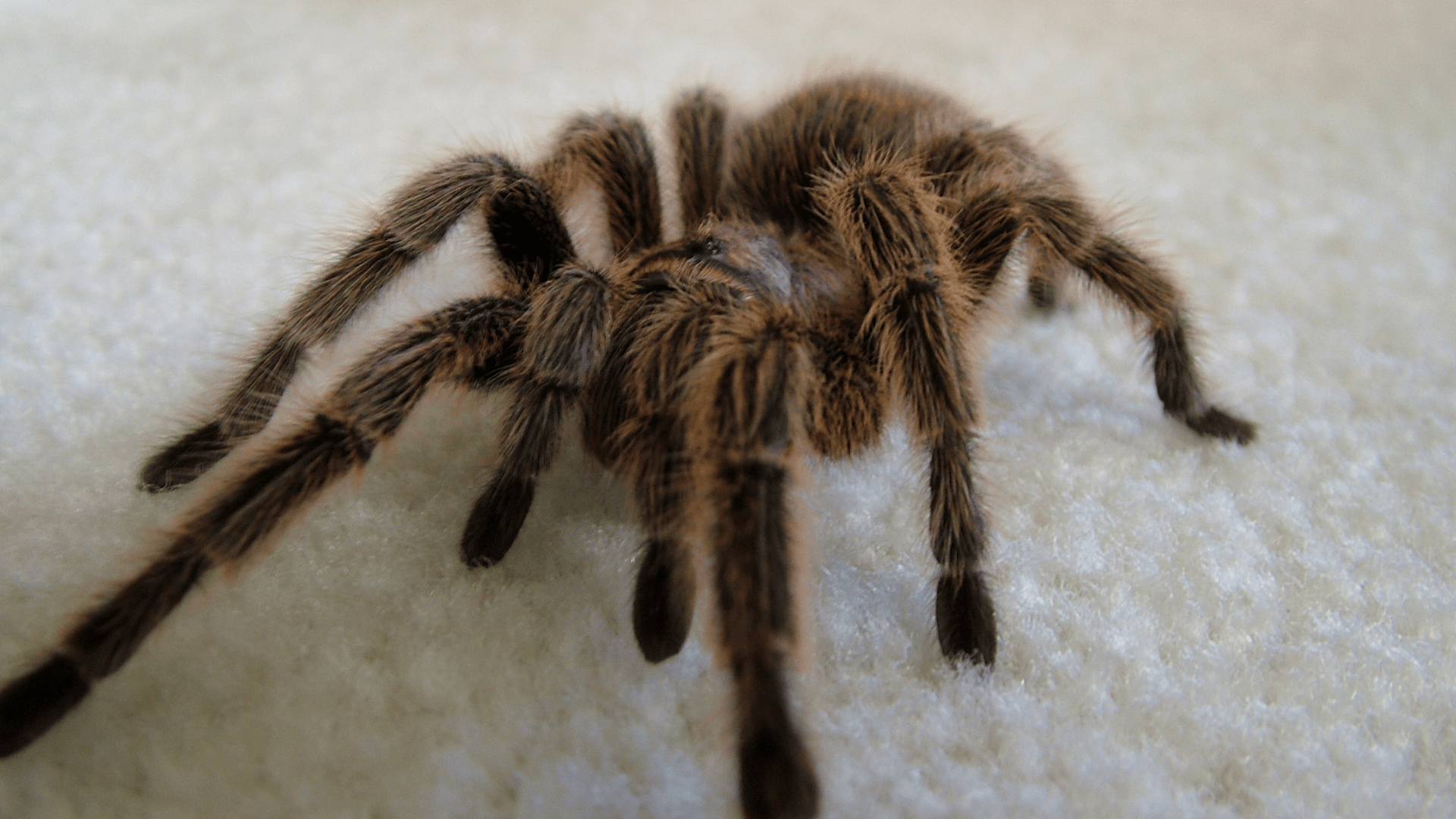
The Chilean Rose Tarantula is a large spider native to Chile, recognized for its pinkish-brown body.
It is one of the most popular pet tarantulas due to its calm and docile nature.
These nocturnal spiders mainly hunt insects such as crickets, beetles, and small rodents.
In the wild, they live in burrows, waiting for prey to pass by.
While they may bite if threatened, their venom is not harmful to humans.
The Chilean Rose Tarantula is often kept as a pet because of its manageable size and gentle temperament.
28. Chalcid Wasp

The Chalcid Wasp is a small parasitic wasp found in many parts of the world.
These wasps are known for laying their eggs inside other insects, such as caterpillars or aphids.
When the eggs hatch, the larvae feed on the host from the inside, eventually killing it.
Chalcid Wasps are important in controlling pest populations, helping maintain a natural balance in ecosystems.
Although they are harmless to humans, their behavior is beneficial for preventing the overpopulation of certain insects.
They come in different sizes and colors, with some species being metallic or brightly colored.
29. Cicada

The Cicada is an insect famous for its loud, buzzing call, which is made by vibrating membranes on its abdomen.
These insects spend most of their lives underground as nymphs, feeding on tree roots. Depending on the species, they emerge as adults after several years.
Adult cicadas are usually active during the summer and can be seen clinging to tree trunks.
The buzzing sound made by males is used to attract females.
While cicadas are harmless to humans, their noisy calls can be annoying.
They play an important role in the ecosystem by serving as food for various predators.
Conclusion
These 29 amazing animals that start with “U” show how diverse and unique nature can be.
Some live in jungles, others in the ocean, and some in open fields, but they all play important roles in their habitats.
Sadly, many of these animals are at risk because of habitat loss and hunting.
By learning about them, we can understand how to protect the animals and their homes.
It’s our responsibility to protect the delicate balance of nature, and every small effort can make a big difference.






